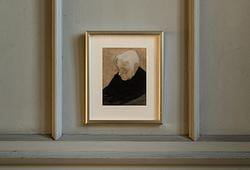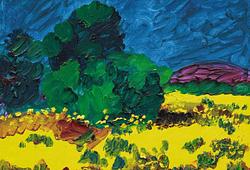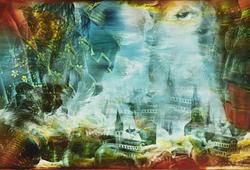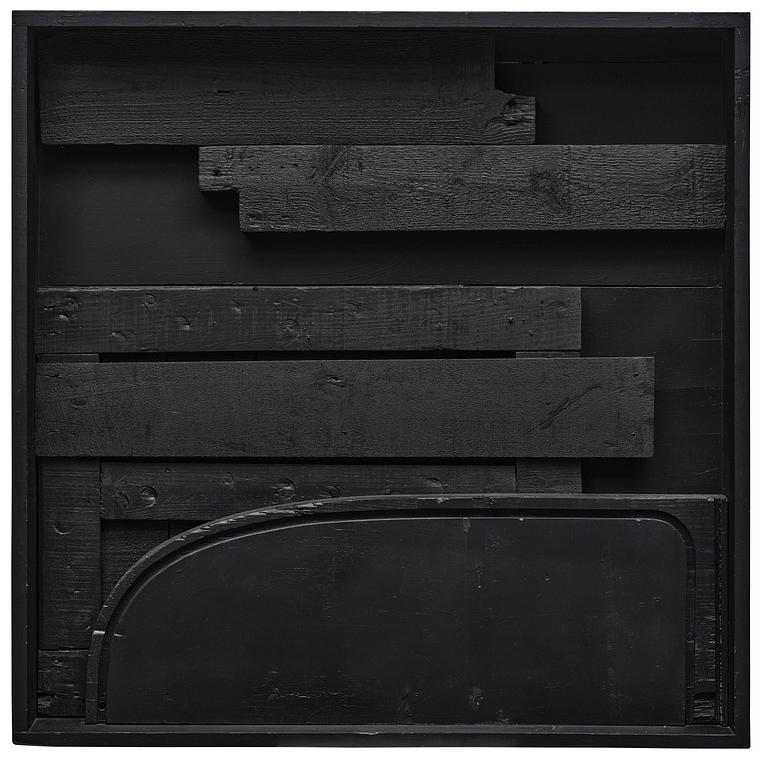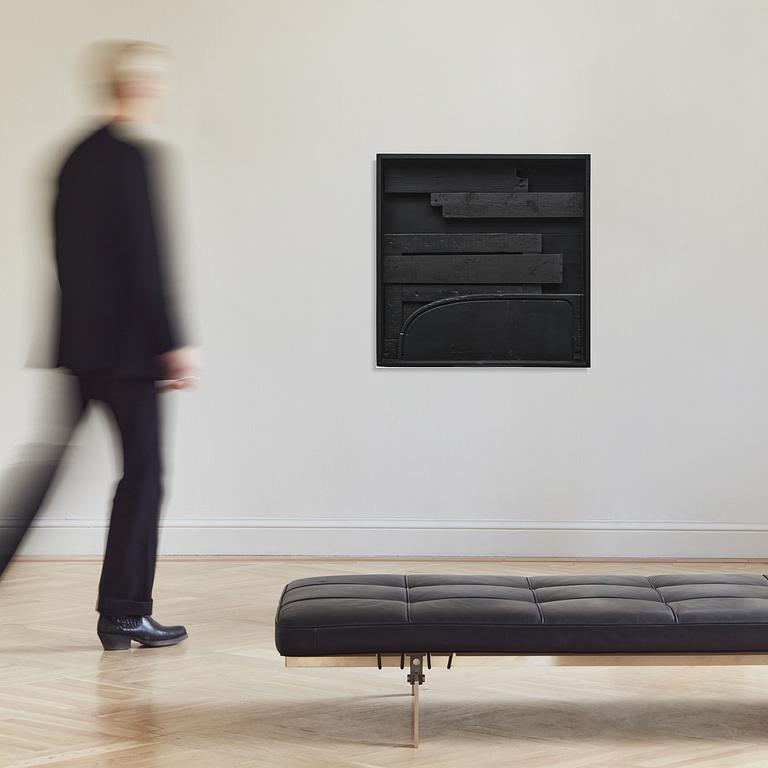Louise Nevelson
"Day/Night XI"
Utförd 1973. Bemålat trä 93 x 93 x 15 cm.
Proveniens
The Pace Gallery, New York.
Privatsamling, inköpt från ovan 1989.
Mennour, Paris.
Privatsamling, Sverige.
Utställningar
Mennour, Paris, "Alicja Kwade & Louise Nevelson, Face-à-face", 3 juni - 24 juli 2021.
Övrig information
Louise Nevelson’s sculptural wood assemblages transcend space, transforming the viewer’s perception of art. Celebrated for her brilliant compositions across a wide range of mediums, she was hailed by critics as one of the foremost sculptors of the twentieth century. A pioneering figure in the art world, Nevelson cultivated an iconic persona—marked by her eclectic mix of ethnic garments, dramatic mink eyelashes, and her magnetic presence. Today her work is represented in over 200 museums, public spaces, and esteemed private collections worldwide. Bukowskis is proud to present two important works by Nevelson in this auction.
Born in Kiev, Ukraine, in 1899, Nevelson emigrated with her family from czarist Russia to the United States in 1905, settling in Rockland, Maine. By 1920 she had moved to New York City, where she studied drama before enrolling at the Art Students League. In the early 1930s she traveled across Europe, attending Hans Hofmann’s school in Munich, before returning to New York in 1932 to continue her studies with Hofmann.
Her interest in shadow and space emerged in her first all-black sculptures, inaugurating the visual language that would define much of her work from the mid-1950s onward. Influenced by Cubism and by the Franco-German artist Jean Arp, Nevelson began creating assemblages from discarded wooden objects found on the street, unifying them with a coat of matte black paint. For Nevelson, black embodied all colors in one and represented the harmony she sought in her art. This development was soon recognized through major acquisitions: the Whitney Museum of American Art acquired Black Majesty (1955) in 1956, followed by the Brooklyn Museum’s purchase of First Personage (1956) the next year. Shortly thereafter, the Museum of Modern Art acquired Sky Cathedral (1958), further cementing her reputation with the inclusion of Dawn’s Wedding Feast (1959) in the landmark exhibition Sixteen Americans (1959–60).
In the 1950s, Nevelson’s sculptures left their pedestals to expand across entire walls like monumental altarpieces. Executed in monochrome—first in black, later in white and gold—these vast compositions of turned chair legs, moldings, and wooden planks approached the scale of Abstract Expressionist painting. Their monumental presence evokes something spiritual and timeless, articulating a deeply personal mythology.
Nevelson’s compositions probe the relationship between sculpture and space, distilling the external world into deeply personal landscapes. While her practice stands in dialogue with Picasso’s Cubism and Vladimir Tatlin’s Constructivism, the pictorial sensibility of her work—and her search for the transcendence of object and space—places her firmly within the realm of Abstract Expressionism.
By the 1960s, Nevelson had achieved international acclaim, becoming one of the most celebrated sculptors of the postwar period. In downtown New York, where she lived from the 1920s until her death, she became known as sculpture’s eccentric grande dame—her dramatic black eyelashes and commanding presence as iconic as her art.




